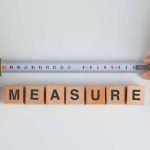Determining the ideal feeding schedule and amounts for a newborn can feel overwhelming for a first-time parent. While general advice provides helpful guidelines, every baby is an individual with distinct nutritional needs influenced by their speed of development and tiny tummy size at this stage. As you closely monitor your infant’s hunger cues, growth trajectory, and intake capacity, you can tweak the frequency and quantity of breast or bottle feedings to optimize their health. Be attentive yet flexible when establishing feeding patterns.
Creating consistent feeding routines in the early months lays the foundation for a baby’s proper health, weight gain trajectories, and developmental milestones. As you observe signals of hunger and fullness from your child, you can tailor an individualized approach over time regarding how often to breastfeed or bottle-feed, and appropriate serving sizes.
Frequency of Feeding
In the initial days and weeks of life, newborns require feeding as often as every 2 to 3 hours, equating to 8 to 12 feedings per day. This extreme feeding frequency is necessary because an infant’s stomach is miniature in size, with a capacity to contain only about 1 ounce of breast milk or formula at one time. Additionally, the recurrent feedings every few hours provide ongoing stimulation for breast milk production in nursing mothers, enabling adequate volumes to be established and maintained as maternal milk supply increases. Therefore frequent breastfeeding or bottle feeding sessions facilitate healthy development.
By around 3-4 months of age, babies start naturally sleeping for longer stretches at night and may not need to eat as often, perhaps every 3-4 hours during the daytime. An exclusively breastfed baby after the early weeks may go longer between daytime feedings as breast milk is easily digested. Still, breastfed infants tend to feed more frequently overall compared to bottle fed babies.
Signs Baby is Hungry
As a caregiver, you can start to identify early signals when your baby is ready to eat. Hunger cues involve increased motion like turning their head left and right, repeatedly opening their mouth, sticking out their tongue, putting hands or closed fists near their lips, mouthing their fist, fussing more, and ultimately crying if feeding is delayed. Watch for early hunger signals to feed your baby before excessive crying sets in.
Amount of Breast Milk or Formula
Knowing exactly how many ounces a baby should consume of breast milk or formula at each feeding is not an exact science. Their stomach capacity grows as they mature during the first six months. A newborn stomach can physiologically hold around 30 ml (1 oz) at first. The amount a baby will regularly take during feeding also depends on a variety of factors.
For breastfed infants 0-6 months, feeding on demand without limitations on frequency or duration instead of on a schedule allows their intake to be regulated according to each baby’s needs. Breastfed babies easily digest and absorb breast milk, and the amounts taken can vary widely at different feedings and times of day. Watch for signs of adequate intake in a breastfed infant – expect at least six wet diapers per day after breastfeeding has been well established in the early weeks.
Bottle-fed infants have traditionally been encouraged to take a minimum amount at each feeding, such as 2 – 3 ounces for newborns and 5 – 8 ounces by six months old. However, paying more attention to hunger and satiety cues is now favored over rigid amounts, especially for formula feeding. There is really no maximum amount limit – babies will stop suckling when they feel full.
Adjusting Feeding Amounts
Babies will convey when they need larger feeding amounts by finishing bottles quicker and acting hungrier again soon after eating. Then, you can tell they are ready to move up another ounce or two. Conversely, make sure not to coax babies into finishing bottles; larger leftovers could signal they need less formula. Consult your pediatrician if concerned about inadequate or excessive intake.
By six months, when solid foods are introduced, formula or breast milk intake often begins declining somewhat as nutrition is obtained from other sources. But breastfeeding and/or formula remain critically important parts of a baby’s diet throughout the first 12 months, supplying major nutrition even as solid foods gradually increase. The American Academy of Pediatrics recommends continuing breastfeeding until at least 12 months and after for as long as mutually desired.
Daytime vs Nighttime Feedings
Newborns need to eat round the clock in the early months, so expect frequent night wakings. As babies reach 12 pounds, they can usually go longer stretches at night without eating – perhaps 6 hours. Since every baby has individual nutritional requirements, pay attention to signs yours is eating adequately rather than imposing arbitrary rules about maximum hours between night feedings.
Whether and when to purposely let babies “cry it out” and attempt going longer without night feedings is a controversial topic with conflicting advice given. Make your own informed decision after researching varying perspectives. With any approach, be attentive to the baby’s cues and watch for any complications like dehydration or inadequate weight gain especially during illness. If pursuing sleep training methods, consider the baby’s medical needs over strict programs.
Growth Spurts
Periods of rapid growth in infancy can disrupt usual feeding patterns. During growth spurts, often occurring around 2 weeks, 6 weeks, 3 months, and 6 months, the baby may nurse longer and more frequently. Their appetite overall increases dramatically but only temporarily. Allow them to eat more, then back off when they seem less hungry again in a few days. If combined with formula, they often take bigger bottle amounts too before settling back into a pattern soon after the growth spurt passes.
Signs of Overfeeding
While underfeeding requires prompt medical attention, overfeeding babies can also pose issues. Signs of overfeeding in infants include spitting up excessively, wet burps, hiccups, intermittent coughing episodes, breathlessness, frequent choking during feeds, and congestion. Babies fed too quickly or too much may pull away and exhibit stress cues like arching away or tensing muscles.
If you observe symptoms of overfeeding, try burping the baby more often, offering smaller amounts each feed, paced bottle feeding, and verifying proper nipple flow if bottle fed. Thickened formulas or anti-reflux medications are sometimes prescribed for reflux issues; wedge sleepers may help keep formula down overnight.
Be observant of each baby’s personal needs without feeling locked into fixed schedules or amounts, especially in the first months. Keep adjusting frequency, quantities, and left/right duration fed as you recognize patterns and cues. Newborn babies need considerable nourishment through feeding around 8-12 times daily, while infants approaching six months begin naturally stabilizing their appetites more. Ultimately how frequently and how much your baby needs fed depends on their unique physiologic state, rate of growth and developmental readiness to consume other nutrition sources.
For more such interesting blogs, Visit EuroKids
















